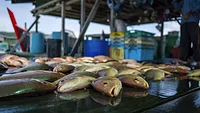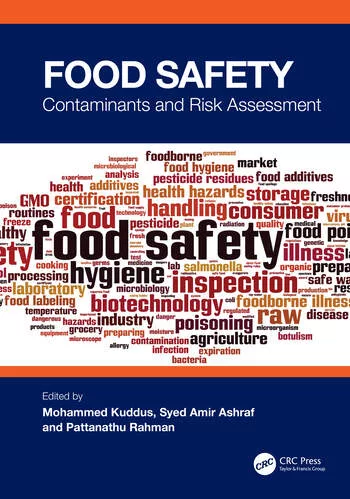FAO/WHO: Science Supports Health Benefits of Fish Consumption, but More Research Needed on Harm From Contaminants

Image credit: Yuval Zukerman via Unsplash
A recent Joint Food and Agriculture Organization of the United Nations (FAO)/World Health Organization (WHO) Expert Consultation on Risks and Benefits of Fish Consumption has concluded that, while the nutritional and health value of eating fish is undeniable, there is limited research about the toxic effects of exposure to methylmercury and dioxins from consuming fish. The experts underline the need for further studies about the exposure to and effects of the contaminants through eating fish, and note that the risks and benefits of fish consumption vary based on a number of individual and regional factors.
The expert consultation compiled its report on the health benefits and risks of eating fish to fulfill a request from the Codex Alimentarius Committee on Food Additives and Contaminants, in an effort to address the growing public concern regarding the presence of chemical contaminants in fish. Specifically, the consultation was asked to compare the health benefits of fish consumption with the health risks associated with exposure to methylmercury and dioxins (including polychlorinated dibenzo-p-dioxins [PCDDs] and polychlorinated dibenzofurans [PCDFs], as well as dioxin-like polychlorinated biphenyls [dlPCBs]) that may be present in fish.
The experts reviewed recent scientific literature, examining the benefits of total, fatty, and lean fish consumption for a number of human health outcomes including allergy and immunology, birth and growth outcomes, bone health, cancer, cardiovascular disease, type 2 diabetes, mortality, neurodevelopment and neurological disorders, and overweightness and obesity. “Fish” included fish and shellfish, but not marine mammals.
Potential adverse effects of dioxins were investigated with respect to chloracne and other dermal effects, male and female reproductive effects, birth outcomes, thyroid disease and thyroid hormones, type 2 diabetes and obesity, cardiovascular effects, hepatic disorders and digestive effects, effects on immune system, effects on the nervous system, effects on teeth and bones, and cancer. Exposure to methylmercury from fish consumption was considered for neurological outcomes, cardiovascular outcomes, growth, and other health outcomes. Furthermore, the role of selenium with respect to methylmercury effects was investigated for cardiovascular outcomes, oxidative stress, immune system, reproduction, thyroid hormones, birth outcomes, neurodevelopment and cognition, vision function, and motor function.
Overall, the experts agreed that fish products are culturally relevant foods providing energy, protein, and a range of other nutrients that are important for health. Strong evidence exists for the benefits of total fish consumption during all life stages, and notably, the experts found associations for maternal consumption during pregnancy with improved birth outcomes, and for adult consumption with reduced risks for cardiovascular and neurological diseases.
However, the experts underline that the benefits derived from general population studies and individual effects vary depending on overall diet, the characteristics of consumers, and fish consumed. Risk-benefit assessments at regional, national, or subnational levels are needed to refine fish consumption recommendations considering local consumption habits, fish contamination levels and nutrient content, nutritional status of the population of interest, cultural habits, and demographics.
Regarding the effects of dioxins and dl-PCBs consumed through fish, studies are lacking; the current evidence base is mainly from populations highly exposed to dioxins and dl-PCBs because of occupational exposure or local contamination. Dietary exposure to dioxins and dl-PCBs comes from multiple different foods of animal origin, including fish. The contribution of fish consumption to these exposures will vary based on region of residence and the amount, source and types of fish consumed. However, there is consistent evidence for an association between dioxin exposure and reduced semen quality. Exposure to total dioxins and dl-PCBs has been associated with altered sex ratio and weaker tooth enamel.
Looking for quick answers on food safety topics?
Try Ask FSM, our new smart AI search tool.
Ask FSM →
For methylmercury, maternal fish consumption during pregnancy is associated with improved offspring neurological development overall, despite evidence from some populations showing that exposure to the contaminant from fish consumption in early life (prenatal and early childhood) has been associated with diminished neurodevelopmental benefit. Additionally, there is limited evidence of adverse health effects from methylmercury exposure in relation to cardiovascular, neurological, and other health outcomes in adulthood. At the same time, there exists heterogeneous evidence regarding associations of childhood methylmercury exposure with neurological outcomes in childhood, possibly reflecting differences in study populations, including selenium status. Based on physiological mechanisms and evidence from animal studies, methylmercury health effects will vary according to selenium status and intake; however, evidence from human studies was limited.
The expert committee highlighted several research needs, specifically, studies considering overall estimates for the association of fish intake with specific health outcomes of interest and the contributions of contaminants from fish consumption to human health outcomes in populations beyond highly contaminated regions. Future research should also consider factors like food processing and preparation, and the types and characteristics of fish consumed. Dose-response studies and meta-regression analyses are suggested to inform public health guidance about optimal fish consumption, and more research is needed to explain the observed heterogeneity in health effects of fish consumption across the life course, as well as on contaminant and nutrient concentrations in fish. Future studies should also consider the aggregate impacts of fisheries depletion for planetary health effects on population health outcomes, in connection with the United Nations’ Sustainable Development Goals.
To maximize benefits of fish consumption for the general population across all life stages, the expert consultation recommends that countries:
- Acknowledge fish as an important dietary source of energy, protein, and other nutrients important for health, and that fish consumption is an important part of the cultural traditions of many populations
- Emphasize the benefits of fish consumption for multiple health outcomes throughout life including during pregnancy, childhood, and adulthood
- Collect standardized data on fish contaminants and nutrients
- Develop, maintain and improve existing databases on levels and trends over time of specific contaminants and nutrient content for fish consumed by region
- Collect standardized data on dietary intake of fish including amount, type, and source, representative at regional, national, or subnational levels for quantitative risk-benefit assessment of fish
- Develop and evaluate risk assessment, risk management, and risk communication strategies that maximize benefits and minimize risks from consuming fish.
The expert consultation noted that other contaminants of concern potentially related to human health harms, such as non-dioxin-like PCBs, per- and polyfluoralkyl substances (PFAS), and polybrominated diphenyl ethers (PBDEs) were not considered in the present report.









